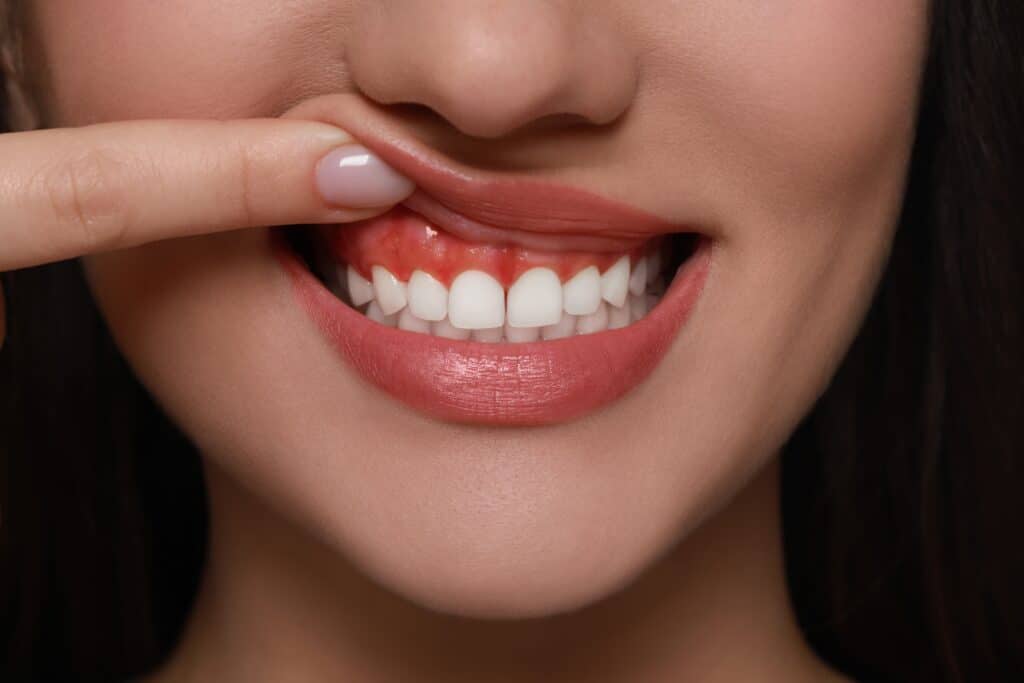
Keeping your gums and teeth healthy isn’t difficult, but doing it right can make all the difference in preventing gum disease and tooth loss. Brushing and flossing are essential habits, but understanding the full scope of oral care will help you protect your smile.
Understanding Gum Disease
Gum disease, or periodontal disease, begins with bacteria found in plaque—a sticky film that forms on your teeth. Plaque contains bacteria, food particles, and other substances. If it’s not removed through proper oral care, it hardens into tartar, which can only be eliminated by a dental professional. According to the American Dental Association (ADA), the bacteria in plaque and tartar lead to gum inflammation, known as gingivitis.
Gum disease progresses in three stages:
Gingivitis: At this stage, gums become red, swollen, and may bleed easily. With consistent and correct brushing and flossing, gingivitis can often be reversed.
Mild to Moderate Periodontitis: As gum disease advances, toxins from bacteria and the body’s immune response start to damage the gum tissue and bone. This causes the gums to recede from the teeth, forming pockets where infection can thrive. Bone loss may also begin at this stage, making treatment crucial.
Advanced Periodontitis: In this severe stage, deep gum pockets and significant bone destruction occur, leading to loose teeth. Without treatment, tooth loss becomes inevitable.
Signs of Gum Disease
By the time symptoms appear, gum disease is often in an advanced stage. Be on the lookout for:
Persistent bad breath
Red, swollen, or tender gums
Gums that bleed easily
Receding gums
Pain when chewing
Loose or sensitive teeth
Key Risk Factors
Several factors can increase your risk for gum disease, including:
Smoking or using chewing tobacco
Hormonal changes (e.g., pregnancy, menopause)
Diabetes
Certain medications that reduce saliva
Family history of gum disease
Effective Oral Hygiene: Your Best Defense
The best way to prevent gum disease is through good oral hygiene habits. Follow these tips to maintain healthy gums and teeth:
Brush Twice Daily:
Brush in the morning and before bed using a soft-bristled toothbrush and fluoride toothpaste.
Hold your toothbrush at a 45° angle to your gums, using short strokes to clean the outer, inner, and chewing surfaces of your teeth.
Replace your toothbrush every 3 to 4 months, or sooner if it’s worn out. Avoid covering it or storing it in closed containers, as this can promote bacterial growth.
Floss with Care:
Floss at least once daily to remove plaque and food particles from between your teeth and along your gumline.
Use about 18 inches of floss, gently sliding it between your teeth. Curve it into a C-shape against each tooth and move it below the gumline.
Use an Antimicrobial Mouthwash:
An antimicrobial mouthwash can help reduce bacteria that lead to gum disease. Consult your dentist for a recommendation that suits your needs.
Eat a Balanced Diet:
Consuming calcium-rich foods like milk, yogurt, and leafy greens helps support the bone around your teeth.
Limit sugary foods and drinks, which feed the bacteria that cause tooth decay. Opt for sugar-free gum if you chew gum.
Stay Hydrated:
Drinking plenty of water helps wash away food particles and bacteria, reducing the risk of gum infections.
Quit Smoking:
Smoking weakens your immune system, making it harder to fight gum infections and heal from gum damage.
Regular Dental Check-ups:
Visit your dentist or dental hygienist at least once a year for a professional cleaning and examination. No matter how well you brush, plaque and tartar can build up, and regular cleanings are necessary to keep gum disease at bay.
Prevention Tips to Keep Your Smile Healthy
In addition to regular brushing and flossing, there are a few more steps you can take to maintain your gum health:
Gum Massage: Gently massaging your gums with a clean finger after brushing can help improve blood circulation and promote gum health.
Address Teeth Grinding: Grinding your teeth can put extra pressure on your gums. Consider using a mouthguard if you grind your teeth at night.
Reduce Stress: Chronic stress can weaken your immune system, making it harder to fight off infections like gum disease. Practice relaxation techniques to manage stress.
By incorporating these habits into your daily routine, you’ll be well on your way to keeping your gums and teeth healthy. Remember, prevention is key, and regular care pays off in the form of a strong smile and better overall health. If you have any concerns about your oral health, don’t hesitate to consult with a dental professional for personalized advice.
References:
Taking care of your teeth and mouth. (2024, August 8). National Institute on Aging. https://www.nia.nih.gov/health/teeth-and-mouth/taking-care-your-teeth-and-mouth
Cherney, K. (2019, March 8). 11 ways to keep your teeth healthy. Healthline. https://www.healthline.com/health/dental-and-oral-health/best-practices-for-healthy-teeth#11.-See-your-dentist-at-least-twice-a-year
Fnp, K. D. (2017, June 19). Caring for teeth and gums. https://www.medicalnewstoday.com/articles/298531#dental_checkups_tooth_and_gum_cleaning
How to keep your gums and teeth healthy – Health Encyclopedia – University of Rochester Medical Center. (n.d.). https://www.urmc.rochester.edu/encyclopedia/content.aspx?ContentTypeID=1&ContentID=1409


